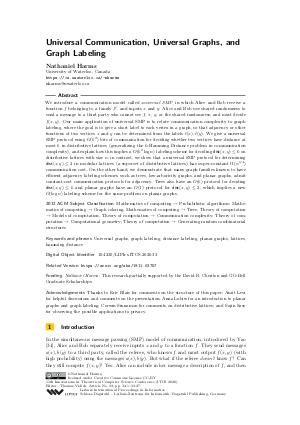LIPIcs.ITCS.2020.33.pdf
- Filesize: 0.6 MB
- 27 pages

 Creative Commons Attribution 3.0 Unported license
Creative Commons Attribution 3.0 Unported license


































Feedback for Dagstuhl Publishing